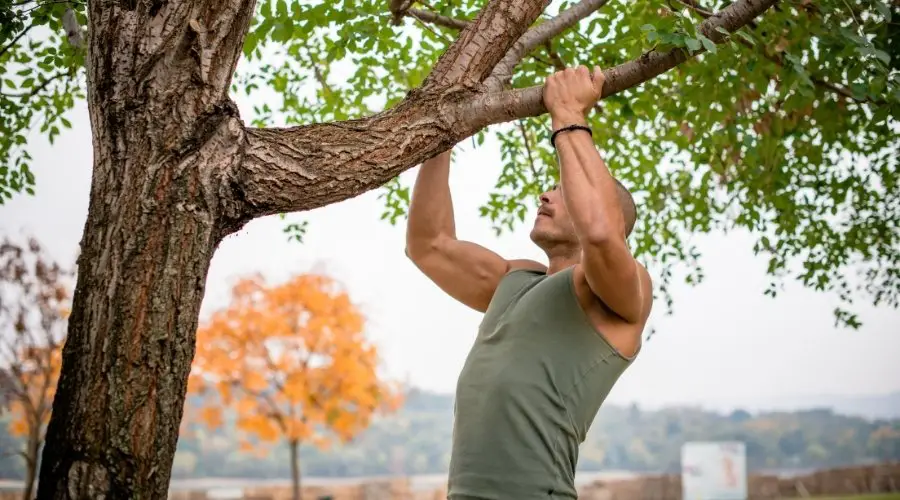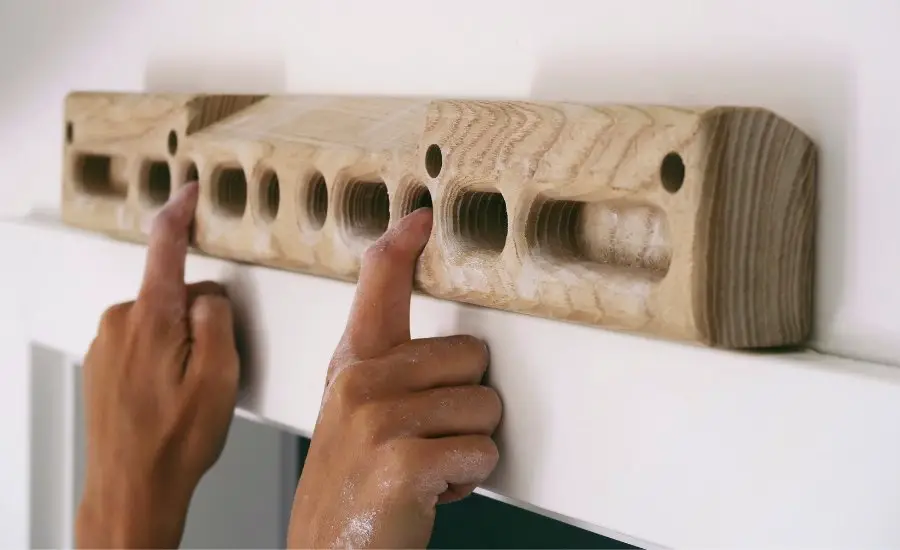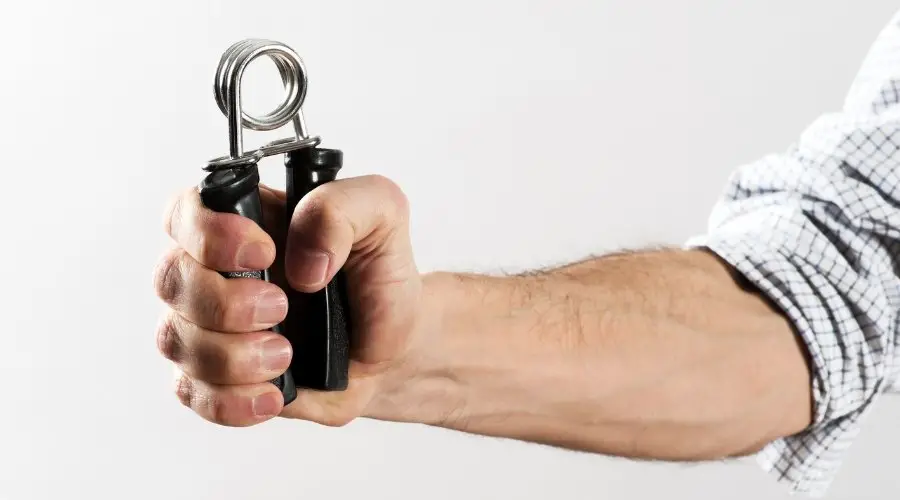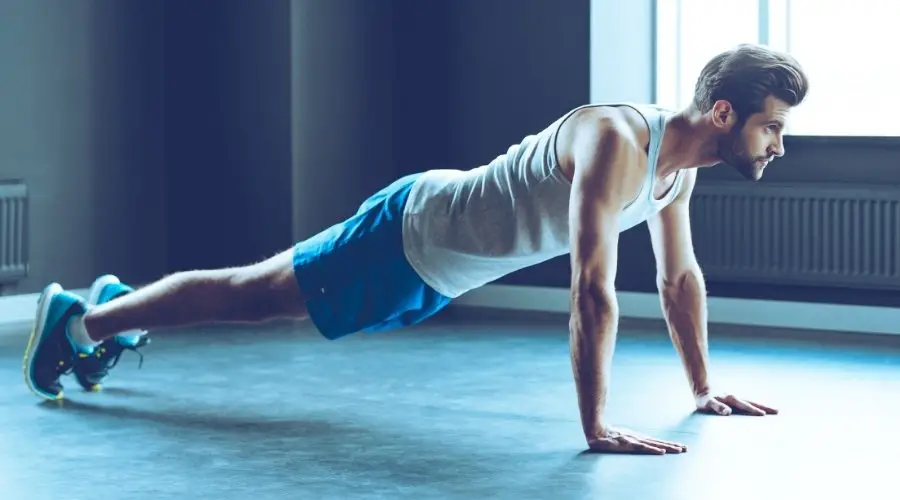Not everyone is able to get into a climbing gym as frequently as they would like to. While climbers are away from the gym, there are certain exercises they can do to improve their climbing. This article explores the best exercises climbers can do at home to improve their bouldering ability specifically.
Bouldering is a climbing discipline that relies heavily on balance, technique, and explosive dynamic movements. While training technique at home is quite difficult, there are a few very helpful exercises to improve your bouldering ability while at home.
If you are more curious to see what muscles exactly are trained by climbing and how to cross train them, check out my article linked here. It goes into great detail on how to cross train them but is not specific to at-home workouts.
This article on the other hand is specifically tailored to help climbers improve their bouldering ability while at home. So, without further ado, let’s get into it.
Below are 7 useful exercises to train for bouldering while at home.
1. Pull-ups

Pull-ups are the bread and butter of every at home climbing workout. Not including them here would be a disservice. They transfer over incredibly well into lock-offs, dynos, and just overall climbing movements involved with bouldering.
Some climbers may need to change these slightly to be more or less difficult depending on their current strength level. Below are a few ideas to help alter them to your current fitness levels.
Ways to make pull-ups harder
- Wrap a towel around the bar and use the ends (this will help with grip strength as well)
- Wear a backpack
- Attach weights to your waist
Ways to make pull-ups easier
- Tie both ends of a resistance band to the bar and step on it (to help pull you up towards the bar)
- Do Australian pull-ups instead
Potential places you can use to do pull-ups at home:
- Doorframe pull-up bar
- Sturdy tree branch
- Back of a staircase
2. Planks

As mentioned above, balance is a large part of bouldering performance. Planks are a full body workout that work the abdominal muscles especially well. The abs are integral in maintaining balance on the bouldering wall and keeping body tension when climbing overhang problems.
Below are a few ways you can alter these to fit your current fitness level.
Ways to make planks harder
- Add weight to your back
- Hold them for longer
- Alternate bringing your knees towards your chest
Ways to make planks easier
- Shorten how long you hold the plank for
- Put your arms on a chair to elevate your upper body
3. Hangboarding/Fingerboarding

Hangboarding (fingerboarding) is an extremely effective way for boulderers to improve their finger and grip strength. That said, it does not come without its risks and is not for everyone. I wrote an article that discusses when hangboarding is actually worth it for climbers in great detail. I highly recommend reading it before incorporating hangboarding into your routine (it is linked here for convenience).
If you are not ready to start hangboarding yet, you can sub these out with dead hangs. This just includes gripping the same bar you are using for pull-ups and hanging for a set period of time.
If you are educated and prepared to start hangboarding, check out my favorite hangboard on Amazon here! Below are a few ways you can alter hangboarding to fit your current fitness level.
Ways to make hangboarding harder
- Wear a heavy backpack
- Only use one hand/arm
- Use less fingers
Ways to make hangboarding easier
- Use the larger finger holds
- Hold the holds for a shorter amount of time
4. Grip Trainers

While they may not give you the most bang for your buck, grip trainers were way too convenient to leave off this list. They are extremely portable and you can bring them with you anywhere you go. As their name implies, they will help you increase your grip strength and hang onto those hard bouldering holds.
You can find my favorite grip strength trainer linked on Amazon here. (it also has the capability to train individual finger strength as well unlike the grip strengthener pictured above!)
To see more ways to train climbing grip while at home, you check out my article linked here.
5. Wall Sits

Training your legs is a very underrated aspect in the climbing sphere. Your legs play a very key role in pushing yourself up the wall, maintaining body tension, and performing various techniques such as heel hooks.
Wall sits will improve your leg strength and help make you a more explosive and dynamic boulderer. Below are a few ways you can alter these to fit your current fitness level.
Ways to make wall sits harder
- Put weights in your lap
- Hold them for longer
- Sit deep in your stance
Ways to make wall sits easier
- Place your hands on your knees
- Do not sit as deep in your stance
- Shorten the duration you hold them for
Potential places you can use to do wall sits at home:
- Any sturdy wall (do not lean against drywall!)
6. Squats

Squats are another great exercise to train your legs to help propel yourself up the bouldering wall. These are perhaps my favorite at home exercise on this list because they help work your abs as well and will improve your balance on the wall. Below are a few ways you can alter these to fit your current fitness level.
Ways to make squats harder
- Only use one leg (pistol squat)
- Wear a heavy backpack
- Hold onto weights as you squat
Ways to make squats easier
- Squat onto a chair and then stand back up
7. Pushups

These are a fantastic workout to keep your body balanced. Climbing tends to heavily favor working your pulling muscles (back and biceps) and not so much your pushing muscles (chest, shoulders, and triceps). It is essential for boulderers to maintain a balanced physique and not focus too heavily on select body parts.
Push-ups are the most common way for climbers to accomplish this balance and are referred to as “antagonist training” for climbing. Below are a few ways you can alter these to fit your current fitness level.
Ways to make push-ups harder
- Bring your hands together to do triangle/diamond pushups
- Hold the “down” position for longer
- Add weight to your back
Ways to make push-ups easier
- Use a chair or the stairs to elevate your hands above your feet
- Lean onto your knees instead of your feet
